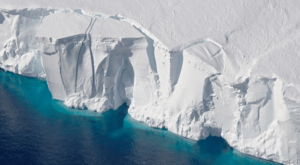by K. Richard, Nov 5, 2020 in NoTricksZone
The forcing uncertainties and lack of observational measurements in the top-to-bottom global ocean preclude an assessment that modern warmth is due to anthropogenic activities.
Key points from a new paper (Gebbie, 2021):
• 93% of the changes to the Earth’s energy budget, manifested as warming of the Earth system, are expressed in the global ocean. Just 1% of global warming is atmospheric.
• Even with the advent of “quasi-global” temperature sampling of the ocean since 2005 (ARGO), these floats “do not measure below 2,000-m depth.” This means that temperature changes in “approximately half the ocean’s volume” are still not being measured today.
• To detect the effects of anthropogenic forcing, it would require energy budget imbalance measurement precision of 0.1 W/m² at the top of the atmosphere (TOA). Uncertainty in the forcing changes affecting climate are ±4 W/m², meaning that uncertainty is about 80 times greater than an anthropogenic signal detection.
• Past changes in global ocean heat content, such as the last deglaciation, have been 20 times larger than modern changes.
• Ocean heat storage during the Medieval Warm Period (Medieval Climate Anomaly, or MCA) was much greater than modern. Modern global ocean heat uptake is “just one-third” of what is required to reach the levels attained during Medieval times.
by Jim Steele, Nov 4, 2020 in WUWT
California’s and other American coastal towns are engaged in divisive arguments regards rising sea levels. Although observed sea levels rose less than 8 inches (0.08 inches per year) since 1900, some modelers forecast much bleaker futures. They predict a 2.4-foot rise for every 1°F rise above preindustrial temperatures, then accelerating to nearly 4.5 feet for every 1°F additional increase. Why a dramatic acceleration in sea level? It’s based primarily on dire models, typically presented to coastal planning commissions as ‘best science’, suggesting increasing ice instability and Antarctica ice sheet collapse. “Antarctica has the potential to contribute more than 3.3 feet of sea-level rise by 2100 and more than 49 feet by 2500.”
Those models have prompted some citizens to argue we must abandon the coasts via managed retreat. Others argue we should build better sea walls. But how high? Others rightfully ask, “how trustworthy are those models?” Model predictions of a collapsing Antarctica ice sheet are not based on observations. Models of Antarctica’s catastrophic ice collapse are attempts to explain ancient sea levels such as the 30-foot higher levels 120,000 years ago.
There are good reasons toquestion catastrophic models. For one, away from the coast Antarctica’s surface temperatures average −70 °F. Antarctica’s extremely cold surfacesrequire global warming to increase many, many times more before surface glaciers could ever melt. For another, although greenhouse theory predicts increasing CO2 concentrations will raise temperatures, greenhouse theory also predicts added CO2 has a cooling effect on Antarctica (Wijngaarden & Happer 2020, Schmithüsen 2015).
…

La géologie, une science plus que passionnante … et diverse

